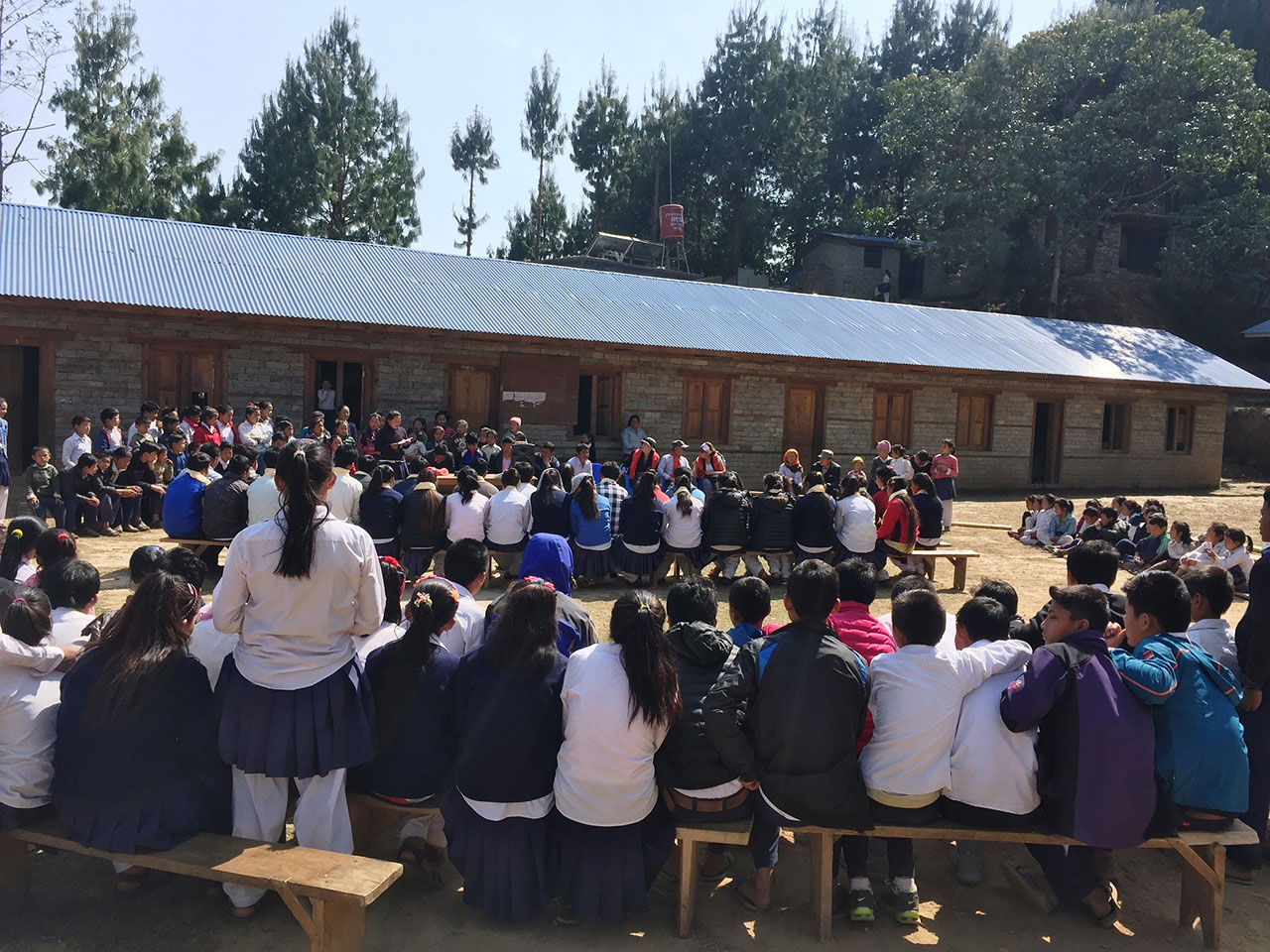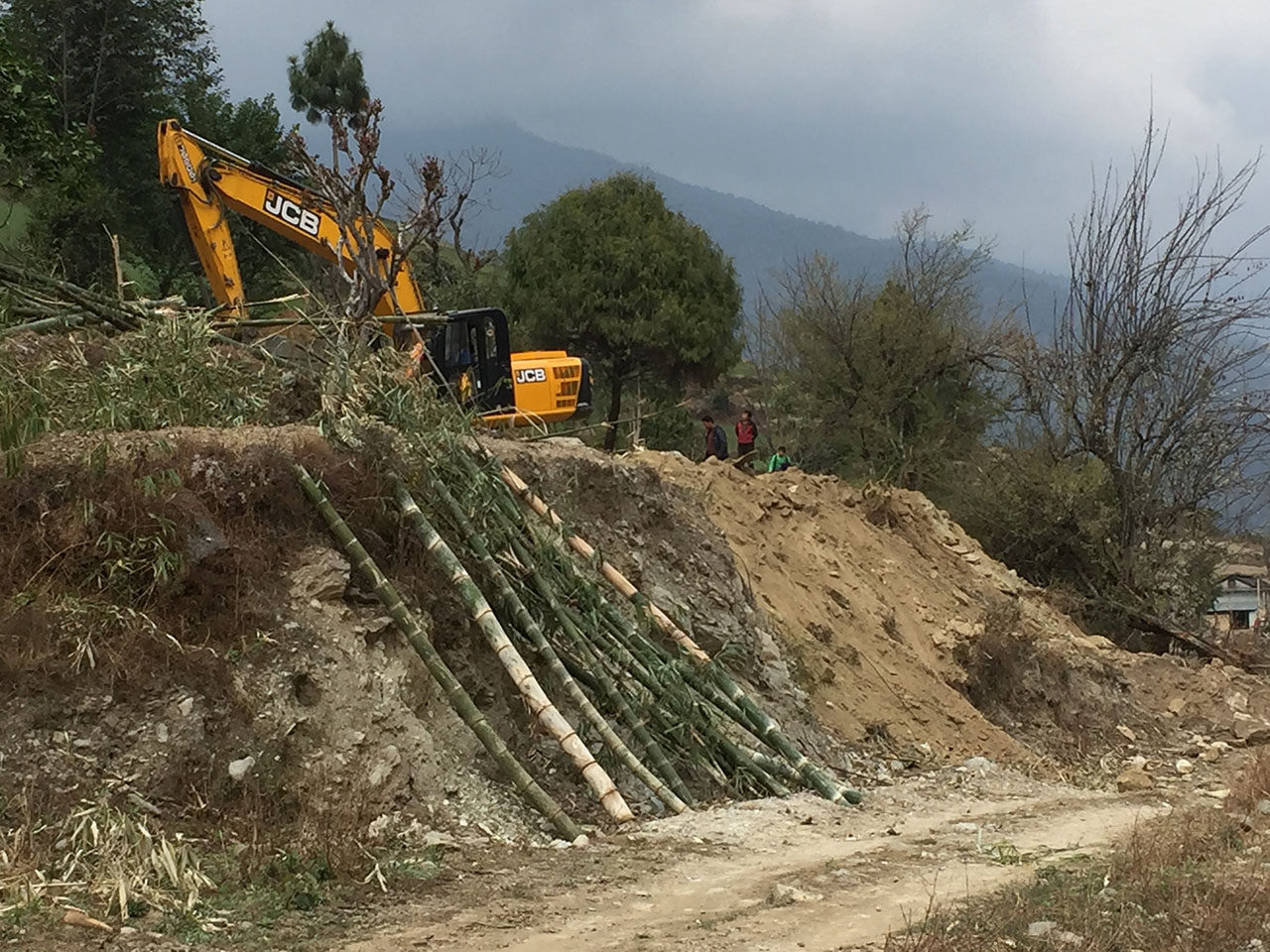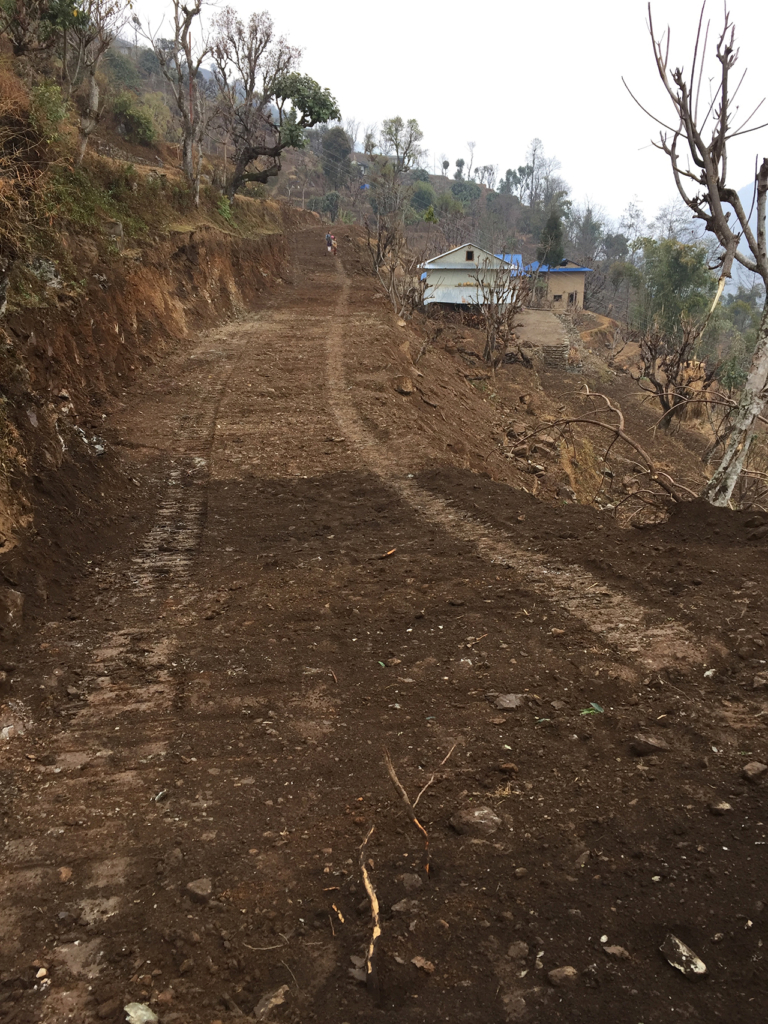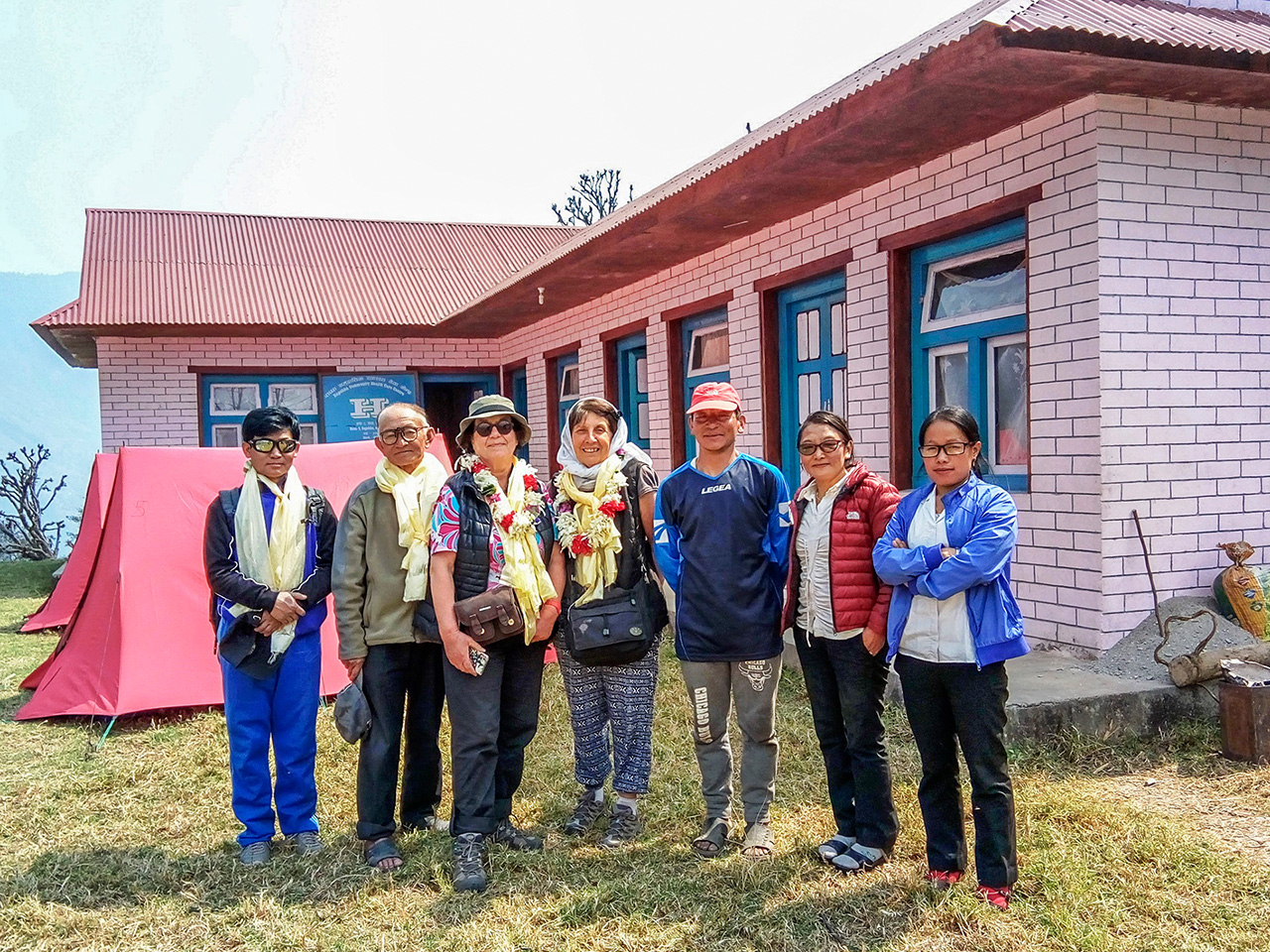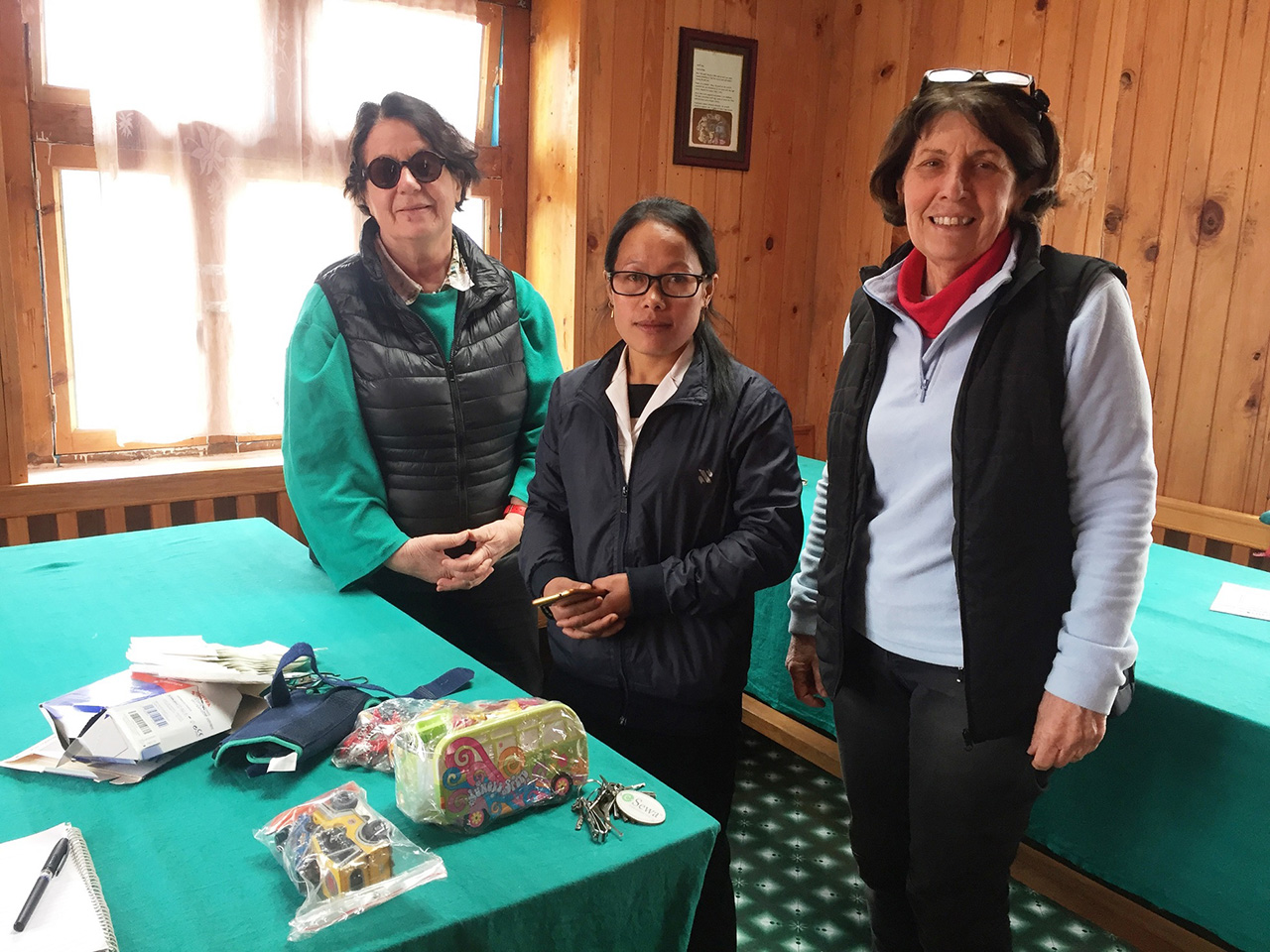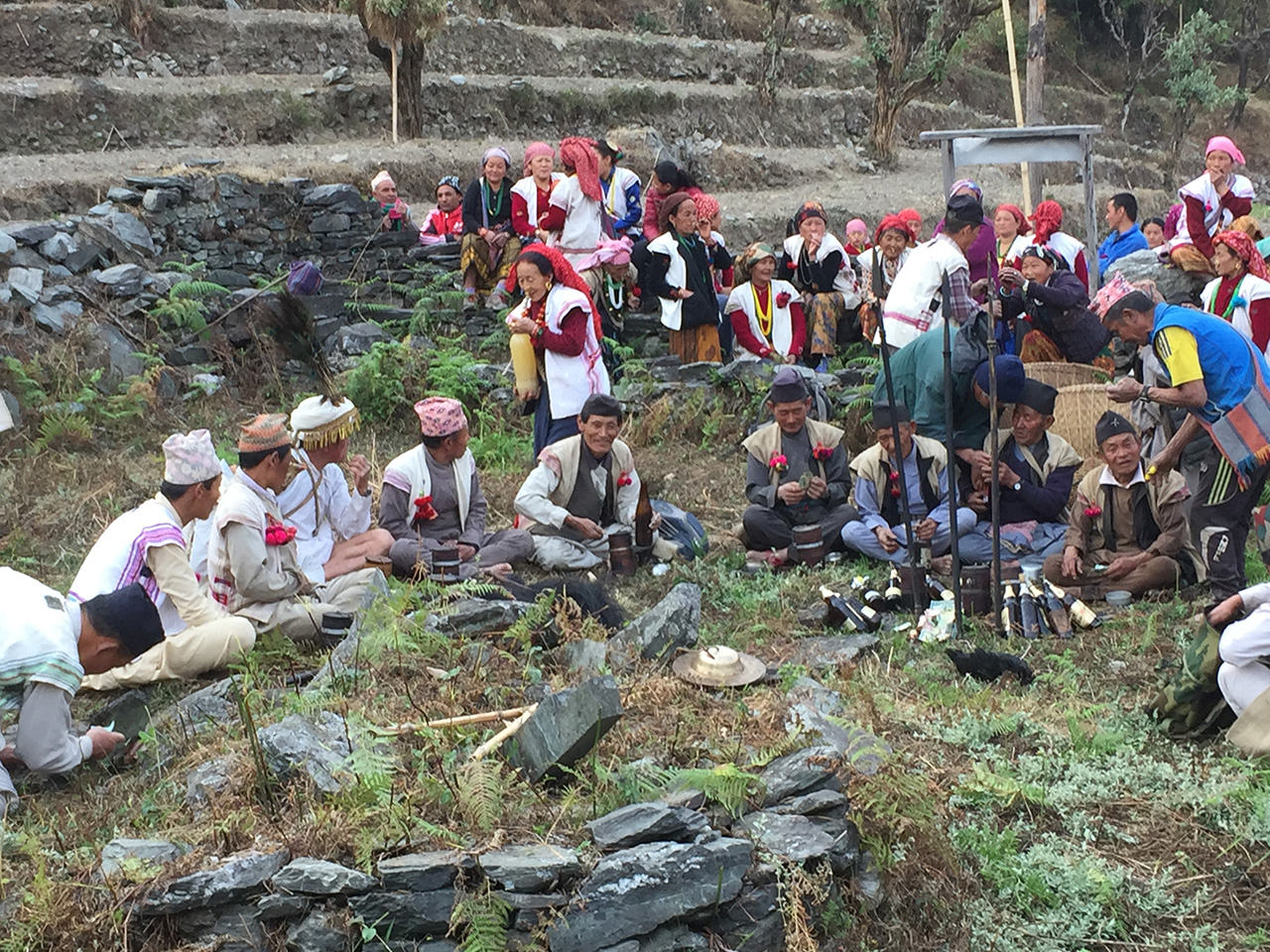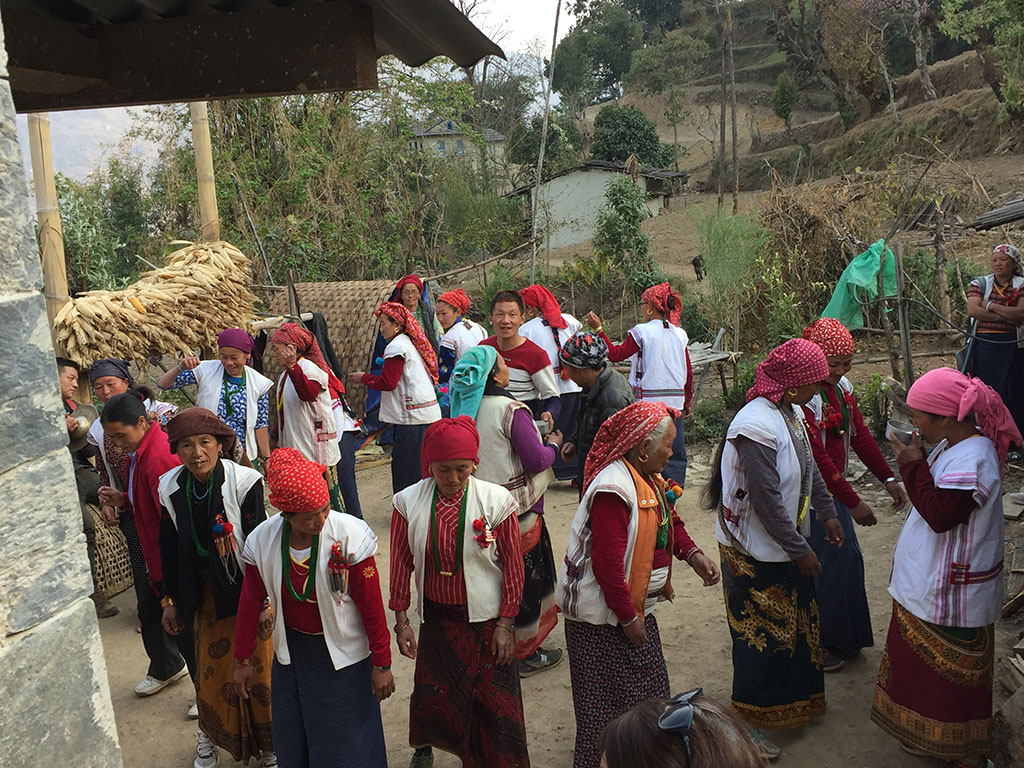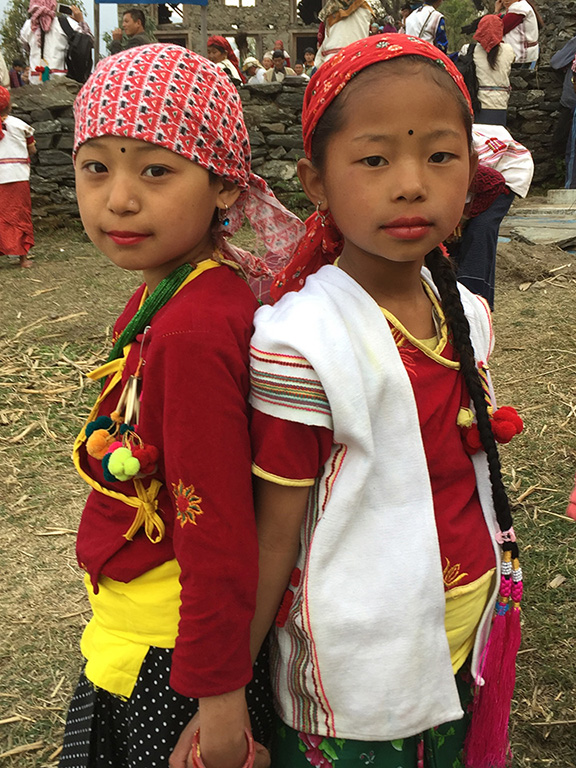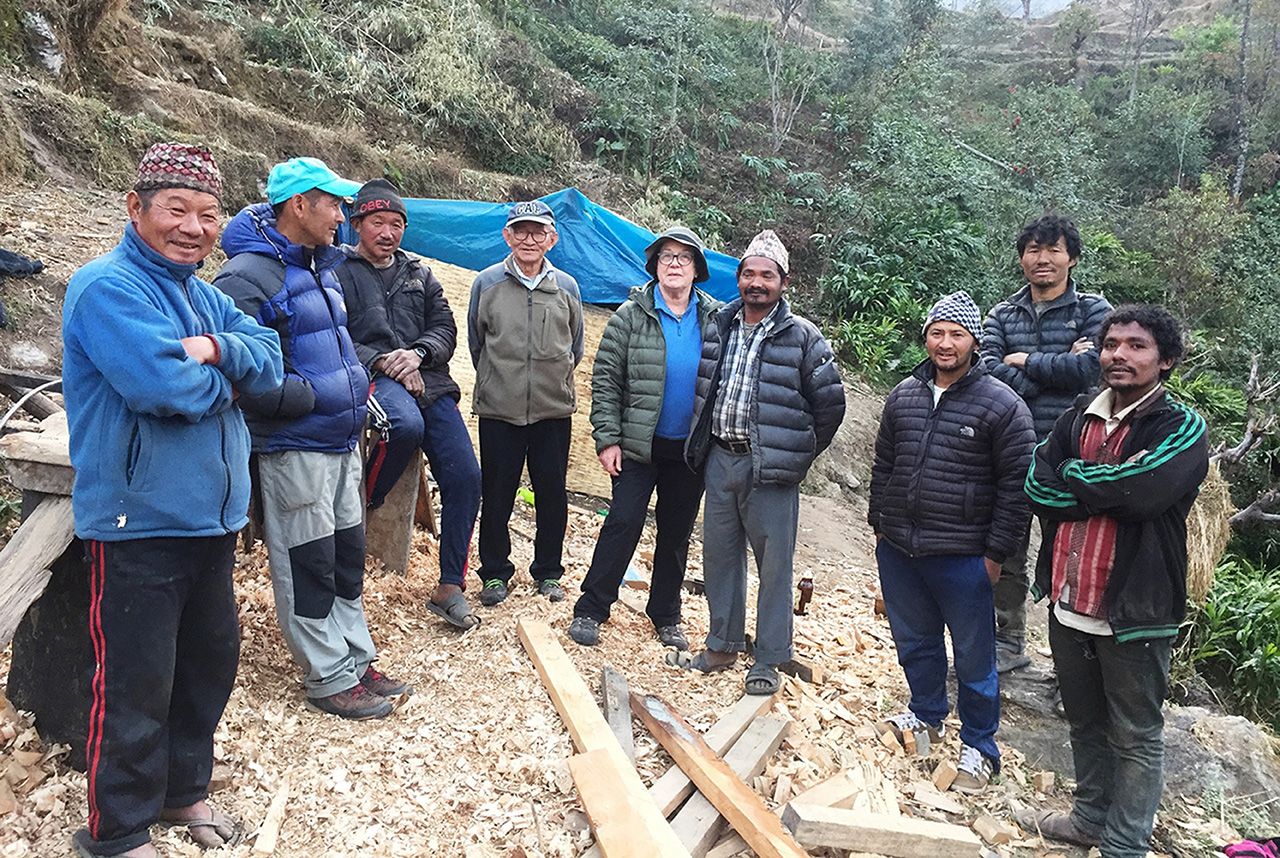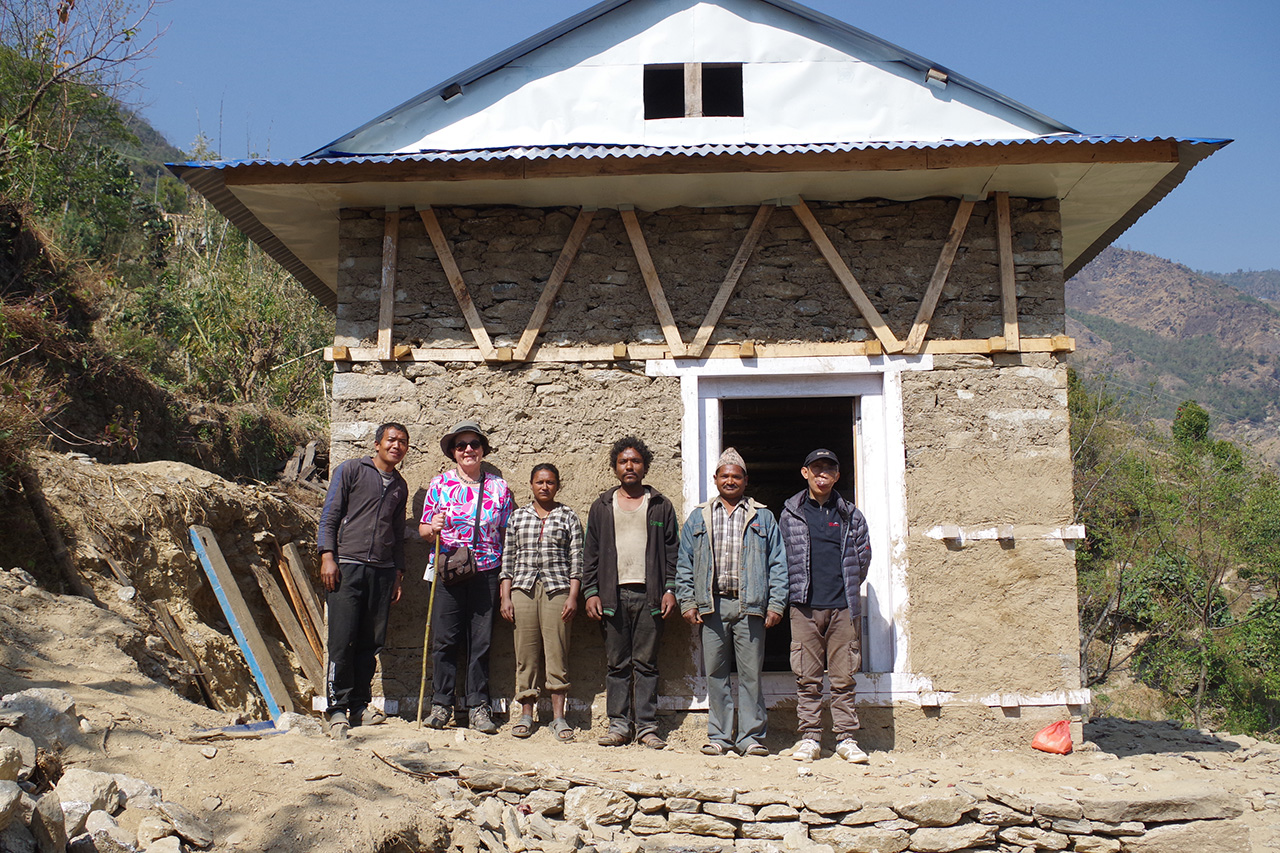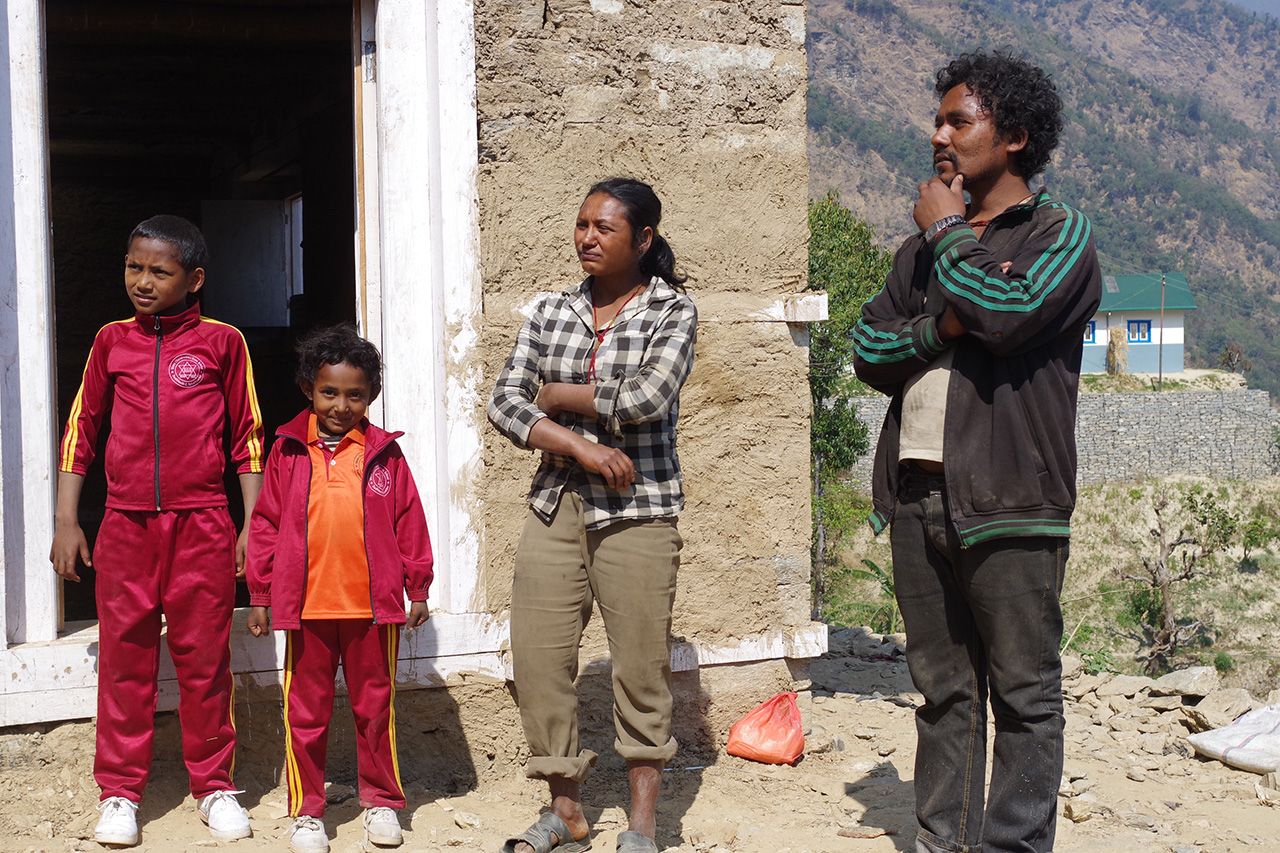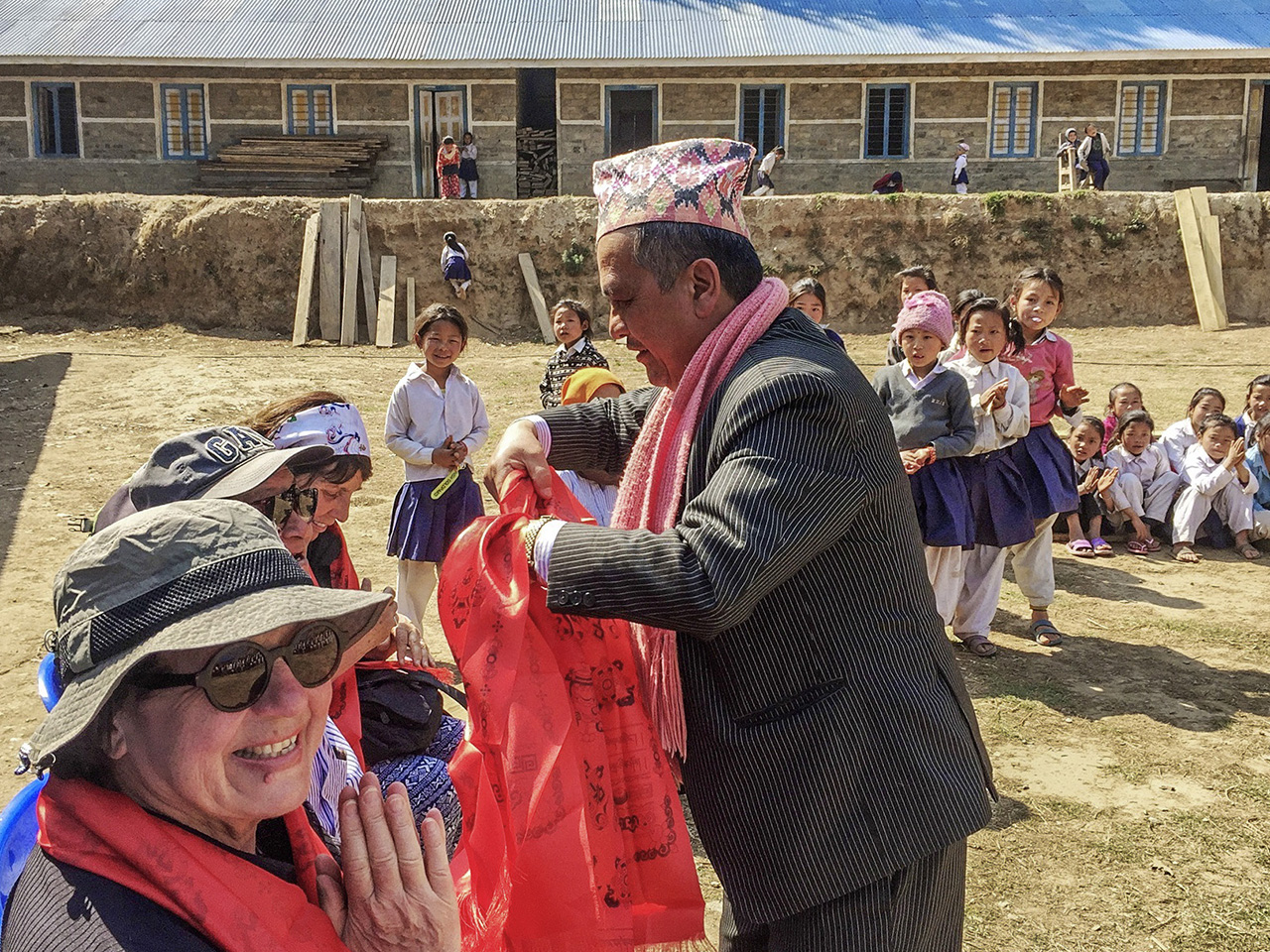After more than a decade without having been to Nepal, my first impressions of this trip in March 2018 are marked by astonished looks that are often pleasantly surprised by recent or ongoing developments, particularly in the village of Basa-Rapcha.
At other times, I was dismayed by the after-effects of the earthquakes on the monuments and in the neighbourhoods of the towns in the Kathmandu valley, by the extreme levels of air pollution in Kathmandu and by the piles of rubbish and the invasion of plastic waste that is spreading unchecked.
In the village, we were astonished to discover two bulldozers in full action, cutting into the slope of the secondary roads from the track already laid out to link it to the various hamlets. It was very noisy, but it was unthinkable until recently to see these huge French-made machines (JCB) at altitude in the Himalayas.
I was also surprised to be in a jeep stuck on the track at the entrance to Kastup for a few minutes following a traffic accident between a motorbike and a tractor.
Opinions differed as to who was responsible for the material damage to the motorbike, but the tractor belonged to a teacher who had already invested in hiring local transport services. The end of an era, portage by doko or transport by mule?
With the track everything moves very fast, heavy building materials are transported by tractors that sell their services to go back and forth along the track. Young boys riding motorbikes with mobile phones, helmets and jackets are surprising us with their teenage looks and the fashion references of their generation. It’s just the beginning, but it’s going to spread very quickly, alongside traditional ways of life that still exist, especially in farming and women’s lives. It was the height of the ploughing and sowing season, with buffalo-drawn ploughs on small terraced plots of land. New trades are developing, such as jeep, tractor and motorbike drivers, but people are still breaking stones by hand to meet the enormous needs of the construction sites under way.
A new stop-off for tea and dalbhat has already been set up on the track halfway between Paphlu and Rapcha.
Several jeeps leave the village in the early hours of the morning to drive to Paphlu or return, avoiding an evening trip to the lighthouse. It’s still difficult, time-consuming (around 5 hours) and tiring to cross the many fords on the track and to drive between the ruts in a cloud of dust. With this mode of transport, heavy goods such as gas cylinders for cooking are beginning to arrive, accessible only to those with a regular income. This is an important prospect in the fight against deforestation through the use of wood fuel.
Rapcha becomes the last supply point for villagers from other parts of the municipality on the other side of the Dudhkosi, and from the end of this track, heavily laden porters are seen crossing the footbridges, as the track will go no further. The connection with the Nunthala track, which has already been mapped out, will have to cross a rock barrier at an undetermined date.
During the monsoon season, some porters and muleteers are likely to be seen, as the track is impassable during the rains. And it is subject to landslides all year round.
With the attractiveness of the piste, villagers are rebuilding further up the slope, while the hamlets below, such as Lop and Bodu, are slowly emptying. Peasant houses have already been abandoned and families have been relocated higher up near the schools and the track.
An administrative centre or town hall for the sector is to be built opposite the dispensary, conveniently located near the main airstrip. This will be the new centre of gravity.
Many houses have been rebuilt with coloured sheet metal roofs and there are many building sites thanks to the return of money from young migrants from the Gulf, the payment of state allowances which slowly redistribute international aid and solidarity actions like those of ANUVAM in favour of reconstruction. However, cracked houses and gaping walls still remain in the village.
The precarious housing of some families and their very poor way of life show that, as everywhere in the world, inequalities are widening between the winners of these developments and those who remain on the margins.
I was struck by other positive developments, in particular the distribution of electricity to individual houses, access to running water from taps and the widespread use of latrines.
Ensuring that everyone has access to these services and that they function properly are priorities for progress that is shared by all the inhabitants. Some hamlets still do not have access to these basic services, and this is a major concern for local councillors. Around the dispensary, for example, children are still going back and forth to fetch water in large cans. Although there was a power cut
throughout the stay in the area around the dispensary, it became clear that the dispensary played an important role in prevention and in childbirth.
Invited to a traditional ceremony in honour of the fertility goddess Wash des Khaling Rai, the event brought together animist priests and a very elderly high priestess, village women dancing with gestures calling for good harvests at the start of spring, drummers and young people dressed in Western fashion taking videos and family selfies with their friends dressed in traditional costumes and jewellery.
More surprisingly, several families in the village claim to have recently converted to the Christian religion under the influence of a church with a chapel in Bodu called the Christian Church of Sion. These people do not take part in this shamanic rite and distance themselves from certain customs, in particular abstinence from alcohol.
At the end of March 2018, ANUVAM reached a decisive milestone with the completion of the 6th house for a very destitute village family, rebuilt using an earthquake-resistant process and local materials by craftsmen under the guidance of Yadav and Jase, our correspondents from the local FEILSS association, who are very involved in the village’s projects.
This exemplary result will be presented by our young technician Vincent Pena, together with a methodological manual produced by CAPA in English and Nepali, at an international conference in Kathmandu in April, before experts in post-earthquake reconstruction.
The training provided to construction workers and the manual, funded by ANUVAM, represent a significant contribution by our association to the local economy and the development of skills to improve employment in this sector.
The trenches made by the bulldozers have generated stocks of wood to be reclaimed for future construction, which is essential to maintain construction using local materials, wood and stone.
This result strengthens our credibility in the community and with local officials, who appreciate our perseverance in supporting the village for over 25 years. It also creates a sense of expectation and responsibility in the face of other situations that may require the help of our association in the future.
After two decades lost to conflict and uncertainty, the political context is rather favourable for persevering with these solidarity initiatives. The 2017 local and national elections are bringing a wind of hope and stability to Nepal.
Asherman Magar, the newly elected representative of Basa-Rapcha in the municipality that encompasses several villages, is well known to our association. He told our association about the needs and demands of the community in this area, with a view to consolidating their development and reducing serious internal inequalities.
EVELYNE PICHENOT, President of ANUVAM, April 2018


